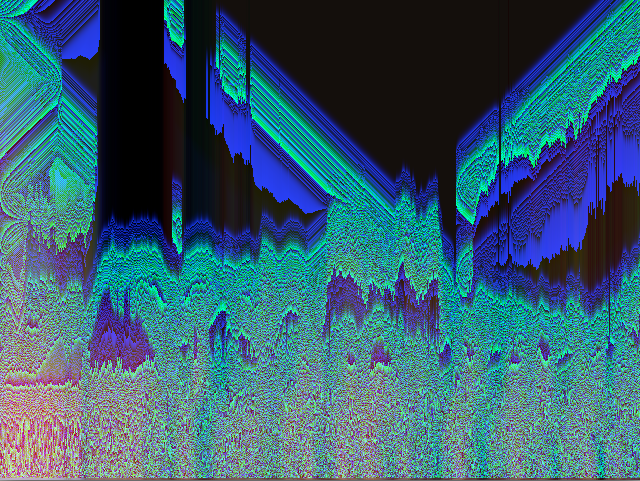
This is a little thing I’ve been working on for James George’s class. It’s a sketch that evolves a 2D image sequence from a single video line. Right now it uses some form of averaging, but soon I’ll write a 1D cellular automaton to make it more interesting. Here are some results.
Here’s the code:
/**
* Type 1,2 for different 'flame' modes
* type 'c' to turn clipping on/off
* @author Omer Shapira
*/
import processing.video.*;
Capture video;
PImage img;
boolean clip = true;
int type = 0;
void setup(){
size(640, 480);
video = new Capture(this);
video.start();
img = createImage(640,480, RGB);
img.loadPixels();
}
void draw(){
update();
image(img,0,0);
}
void update(){
if (video.available() == true) {
video.read();
video.loadPixels();
int ix,iy;
for (int i = width*height-1; i>=0; i--){
ix = i%width;
iy = i/width;
if (iy >= height-2){
img.pixels[i] = video.pixels[i];
} else {
switch (type){
case 0 :
img.pixels[i] = averageColors(clip, img.pixels[i+width - 1], img.pixels[i+width] ,(ix==width-1? img.pixels[i+width - 1] : img.pixels[i+width + 1]), img.pixels[i+width*2]);
break;
case 1 :
img.pixels[i] = averageColors(clip, img.pixels[i], img.pixels[i+width]);
break;
}
}
}
img.updatePixels();
}
}
int averageColors(boolean clip, color... colors){
float tempfloat = 0;
int tempColor = 0;
for (int i = 0; i<4; i++){
int range = 255<<(8*i);
for (color c : colors){
tempfloat += (c&range);
}
tempfloat /= (float) colors.length;
tempColor += (!clip ? int(tempfloat) : int(tempfloat)&range);
tempfloat = 0;
}
return tempColor;
}
void keyTyped(){
if (key < '9' && key > '0'){
type = int(key)%2;
} else if (key=='c') {
clip = !clip;
}
}

